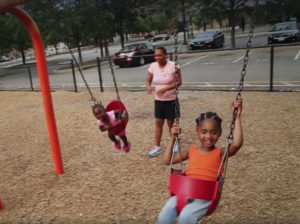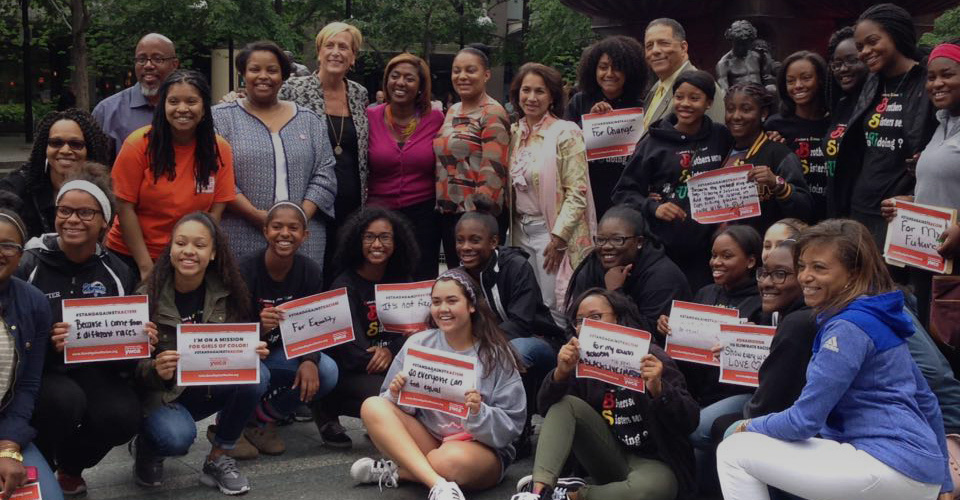A Safer, Brighter Future
Violence is a Public Health Issue
“Violence plagues too many of our communities. Cincinnati’s crime rate has been stuck in a yo-yo for years. To have a real impact on crime, we must do things differently. We must address the root causes of violence.”
 Violence is a disease. To prevent it, we must treat individuals, families, and communities that are victims of repeated trauma. This includes implementing psych trauma teams for witnesses and others impacted by violence, and programs—treatment, inoculation, and prevention—to identify the young people most exposed. We need police officers, professionals, and the community—individuals, families, and organizations—to come together and collaborate. The proposals listed below reflect successful programs from other communities, as well as programs that we know have seen success in Cincinnati but have lost steam under an unsupportive administration. This is not an exhaustive list, but a framework that, as Mayor, Yvette will use to move the needle on this critical issue.
Violence is a disease. To prevent it, we must treat individuals, families, and communities that are victims of repeated trauma. This includes implementing psych trauma teams for witnesses and others impacted by violence, and programs—treatment, inoculation, and prevention—to identify the young people most exposed. We need police officers, professionals, and the community—individuals, families, and organizations—to come together and collaborate. The proposals listed below reflect successful programs from other communities, as well as programs that we know have seen success in Cincinnati but have lost steam under an unsupportive administration. This is not an exhaustive list, but a framework that, as Mayor, Yvette will use to move the needle on this critical issue.
Renewed Commitment to the Collaborative
Continue to use our current resources—an effective, well-staffed police force and the entities that support it—while leveraging underutilized assets and revitalizing forgotten programs to make sure we are truly practicing community policing.
Lift our community policing model to the next level. Police-community relations is an important issue for cities across the country and Cincinnati is no exception. We must continue to evaluate how we recruit, hire, train, retain, and discipline police, as well as ensure “Use of Force” policies reflect our community’s needs. We must ensure routine positive interactions between our officers and citizens, and continue to improve communication between law enforcement and the people they serve.
Recommit to the promise of the Collaborative Agreement. The Collaborative Agreement made a remarkable difference for Cincinnati. We have made tremendous strides as a community, but there continues to be room for improvement. The City should reconvene the individuals involved in creating the Collaborative Agreement—in addition to new voices—for a frank conversation of how far we’ve come and what we can do better. We must confirm how community-police relations are viewed by our citizens, and what must be done to truly recognize our full potential as a safe and thriving city.
Address re-entry difficulties for formerly incarcerated citizens. Incarcerated Cincinnatians often have difficulty returning to normal life after release: it’s hard to get jobs, find housing, or obtain drug treatment and other services. Without the right support, they are more likely to return to criminal activity. To combat this, we must ensure that our returning citizens have a second chance. We must explore tax incentives, grant programs, and contracting policies rewarding employers and landlords willing to open their doors to people with criminal records. We must also invest in drug treatment programs aimed specifically at this at-risk population.
Treat violence as a public health issue
Violence is a public health issue. Research has shown it, and cities with the most effective progress in violence reduction have taken this approach. By utilizing public health strategies and prevention-based interventions, we can stop violence before it starts.
Respond to violence using “Two Degrees of Separation.” Like a disease, violence spreads through communities through close contact with an impacted person. Once someone is a victim of gun violence, those closest to them are exponentially more likely to fall victim to similar violence. In other words, “hurt people hurt people.” Cincinnatians—particularly our young people—are suffering from PTSD, toxic stress disorders, and other psychological trauma resulting from early and frequent exposure to violence at alarming rates. We can and must address these issues to keep our City safe. We can prevent the spread of violence by utilizing a “two degrees of separation” approach that treats not only the victim, but the people in their social networks. Yvette has led the implementation of a pilot program in Mt. Auburn guided by these principles. In this program, Crisis Response Teams, staffed by Health Department officials, respond to shootings in real time, meeting with witnesses and victims. These teams offer treatment, perform assessments for PTSD and other trauma-related issues, and refer people to services as needed. As Mayor, Yvette will continue and expand these efforts, involving law enforcement, social services agencies, community councils and other invested citizens in each neighborhood.
Support existing programs and organizations. Cincinnati has been doing this work for a long time. Many existing programs have a proven record of success, and existing community buy-in. Building on this work—rather than trying to “reinvent the wheel”—will lead to faster, more effective results. Programs addressing violence-related stress are already in place across the City. Violence prevention services and other programs are funded through the City’s Human Services Fund. The City must support these evidence-based programs, and commit to being the best possible partner in their work.
Make the Violence Prevention Task Force a permanent fixture. Cincinnati convened a working group of invested individuals to develop a set of recommendations to the City addressing violence prevention. This generated many great ideas, and their work is not done. If we are going to truly address violence in Cincinnati over the long-term, we should make this working group a permanent program, designed to continuously evaluate and make recommendations regarding our City’s response to violence.
Involve the entire community at every level
Our violence prevention plan must include those most impacted by this issue, particularly Cincinnati’s youth. A “bottom up” approach has more lasting impact than “top down.”
Open a “Youth Office” to make city government accessible to citizens of all ages. The Youth Office would take on multiple roles, including (1) serving as a citizen sounding board for Cincinnati’s youth; (2) reviewing existing City policies and recommend new methods to ensure Cincinnati’s young people have their needs met; and (3) supporting youth community councils, with a goal of expanding these groups beyond existing neighborhoods.
Make violence training accessible to community members who work with our youth. Young people exposed to violence often experience Post Traumatic Stress Disorder symptoms as bad or worse than soldiers returning from war. We must provide opportunities for community members who work with kids every day have access to training on how to prevent, detect, and address the psychological aftermath of exposure to violence. As Mayor, Yvette will support training for school officials, recreation center employees, and others working with our youth.
Rethinking our recreation center services. The Cincinnati Recreation Commission operates centers across the city, which are available resources to keep kids occupied and supervised when they’re not in school. We must ensure our youth and parents know these facilities are available, understand how to become members, and have access and transportation options that allow kids to make use of facilities. We must also ensure that the programming offered is fun and enticing to kids, particularly teens, as well as available to the people that will actually use these centers.





